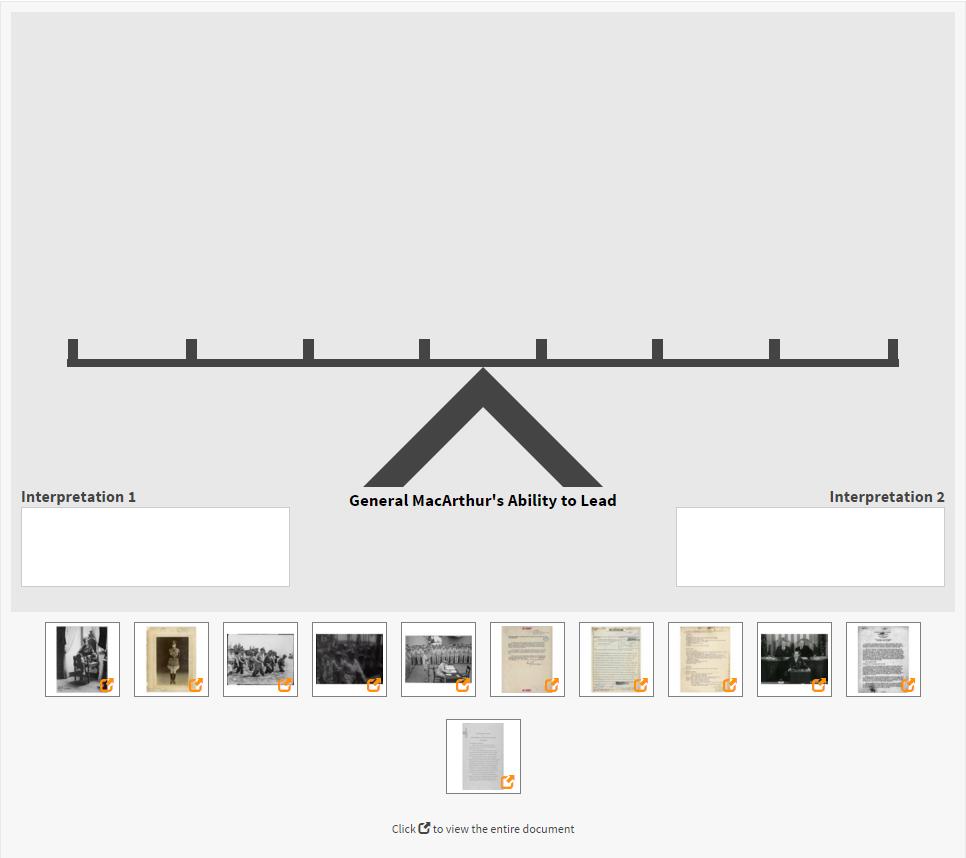What Kind of Leader Was General Douglas MacArthur?
Weighing the Evidence

About this Activity
- Created by:National Archives Education Team
- Historical Era:Postwar United States (1945 to early 1970s)
- Thinking Skill:Historical Issues-Analysis & Decision-Making
- Bloom's Taxonomy:Evaluating
- Grade Level:High School
In this activity, students will analyze video clips, photographs, and written documents related to General Douglas MacArthur to explore the controversy surrounding his career, especially the decision by President Harry S. Truman to remove him from command during the Korean conflict. Students will use the scale to organize evidence and arrive at their own conclusion about MacArthur.
https://www.docsteach.org/activities/student/what-kind-of-leader-was-general-douglas-macarthurDocuments in this activity
- Brigadier General Douglas MacArthur cleaned up after the Germans left and restored what he could of the original splendor. He is seated in the original chair of the old lord of the chateau. St. Benoit
- General Douglas MacArthur signs as Supreme Allied Commander during formal surrender ceremonies on the USS MISSOURI in Tokyo Bay. Behind General MacArthur are Lieutenant General Jonathan Wainwright and
- General Douglas MacArthur wades ashore during initial landings at Leyte, Philippine Islands
- House of Representative remarks on President Harry S. Truman's decision to replace General Douglas MacArthur as Supreme Commander, Allied Powers; Commander in Chief, United Nations Command; Commander
- List of Decorations and Service Medals Awarded to Douglas MacArthur
- MacArthur Returns to the Philippines
- Photograph of Douglas MacArthur
- Presidential Proclamation 3579 of April 5, 1964, by President Lyndon B. Johnson announcing the death of General of the Army Douglas MacArthur
- Proposed Orders and Statement on Dismissal of General MacArthur
- Telegram from General Omar Bradley to General Douglas MacArthur
- The Douglas MacArthur Story




